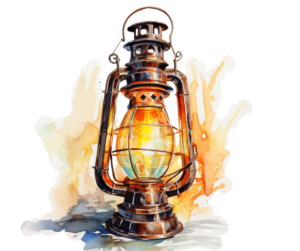
What is Mussar?
Mussar, a cherished Jewish tradition, serves as a guide for spiritual development, fostering awareness, wisdom, and personal transformation. It unfolds a treasury of teachings and practices, helping individuals recognize their inner holiness and overcome inner barriers that obscure their inner light.
Mussar encompasses methods like studying classical and contemporary Mussar texts, meditation, journaling, silence, chanting, visualization, and acts of kindness. Originally rooted in the Orthodox Jewish community, Mussar's wisdom transcends boundaries, emphasizing that we are souls, not mere possessors of souls.
It identifies three soul levels: Neshama (pure core), Ruach (vital force), and Nefesh (accessible, linking body and soul). Nefesh, shaped by emotions, personality, and desires, influences how our inner holiness radiates.
Mussar illuminates our universal path to self-discovery, ethical living, and the revelation of our divine essence. Embarking on this journey, individuals across the world, regardless of age or denomination, find a shared path towards profound self-awareness and spiritual growth.
The History of Mussar
The study of Mussar originated in tenth-century Babylonia when Sa’adia Ga’on published his Book of Beliefs and Opinions, initiating an ongoing inquiry into human nature within the Jewish world.
Initially, Mussar was a solitary, introspective practice. However, in the mid-1800s, Rabbi Yisrael Salanter urged the Jewish people to embrace Mussar as a means to strengthen their hearts, leading to a shift in practice.
In the 20th century, notable figures like Rabbi Elyah Lopian, Rabbi Eliyahu Dessler, and Rabbi Schlomo Wolbe continued to write and teach, preserving the wealth of spiritual wisdom. The Holocaust significantly impacted the Mussar movement, but a revival occurred in the 21st century.
Post world war II, some Mussar movement students settled in Israel, establishing Mussar yeshivas. In the United States, few institutions were dedicated to Mussar, but some yeshivas continued weekly Mussar study. The 21st century saw a significant revival in North America.
Organizations like the AishDas Society and the Salant Foundation within the Orthodox community, along with The Mussar Institute founded by Alan Morinis in 2004, played key roles in organizing Mussar groups, classes, and teaching events. This revival also gained traction in non-Orthodox frameworks. These initatives contributed to the revival of Mussar in the 21st century.
Alan Morinis' book Everyday Holiness (2007) and Ira Stone’s A Responsible Life (2007) are among the popular books that contributed to the renewed interest in the Mussar movement.
Mussar has become an "emerging and growing phenomenon" within Reform Judaism, and leaders of Conservative Judaism have debated whether Musar should stand at the center of its approach.
Illuminating The Inner Light
While Mussar finds its historical roots in the Orthodox Jewish community, it transcends denominational boundaries and offers invaluable insights that resonate universally. At its heart, Mussar prompts a fundamental shift in perspective, reminding us that we are not merely individuals who "possess" a soul, but that our essence is the soul itself. This recognition is pivotal in our journey, for it underscores the inherent purity of our souls, often obscured by the complexities of our habits, tendencies, and imbalances.
To further illustrate this concept, we draw inspiration from Rabbi Simeon Ben Paz, who poetically emphasizes the soul's profound connection to the body and the world, akin to how God relates to the universe. Mussar identifies three distinct levels of the soul: Neshama, the ethereal and pure core; Ruach, the animating force akin to the "spirit of life"; and Nefesh, the most accessible and tangible dimension of the soul, which interlaces our physical existence with our spiritual essence.
Nefesh encompasses the facets of our inner world: our emotions, desires, aversions, strengths, weaknesses, personality, and identity. The clarity of our Nefesh influences how brilliantly the light of our Neshama shines through; when it is clear and unblemished, the inner holiness radiates without hindrance, much like sunshine piercing through clouds.
Ultimately, Mussar reminds us that the extent to which our inner holiness shines outward is intricately linked to our inner world—the intricate tapestry of personality, character, and the interplay of our appetites and aversions. These components shape our connection to the world and determine the degree to which the profound holiness at our core is revealed to ourselves and to the world around us. In essence, Mussar offers a roadmap to self-discovery, ethical living, and the illumination of the divine spark within us all.
What Are Mussar Middot?
Through the study and practice of Mussar, students balance the characteristics or traits of their nefesh (soul) that cause the light within to dim. In Hebrew, the word for traits of the nefesh is middot. The singular form is middah.
While many middot are discussed in Mussar literature, in his book, Everyday Holiness, Alan Morinis explores 18 middot and lists 58 in the Soul Trait Inventory, p. 295

Humility – Anavah (ענוה or ענווה)
Patience – Savlanut (סבלנות)
Gratitude – Hakarat Ha’Tov (הכרת הטוב)
Compassion – Rachamim (רחמים)
Order – Seder (סדר)
Equanimity – Menuchat Ha’Nefesh (מנוחת הנפש)
Honor – Kavod (כבוד)
Simplicity – Histapkut (הסתפקות)
Enthusiasm – Zerizut (זריזות)
Silence – Sh’tikah (שתיקה)
Generosity – Nedivut (נדיבות)
Truth – Emet (אמת)
Moderation – Shevil Ha’zahov (שביל הזהב)
Loving Kindness – Chesed (חסד)
Responsibility – Achrayut (אחריות)
Trust – Bitchon (ביטחון)
Faith – Emunah (אמונה)
Awe- Yirah (יראה) – *No English translation is accurate. A close association is fear/awe.
What is a Va’ad group?
A va’ad, is a traditional Mussar group, participants explore the inner life through discussions on soul-qualities. Encouraged to share personal stories, the goal is to apply and test concepts in real-life contexts, fostering a deeper understanding and awareness of these qualities in their lives. The guidelines emphasize confidentiality, respect for individual journeys, and the enjoyment of the learning process.
What are the advantages of learning in a chevruta with a partner?
Enhance your learning experience by establishing a weekly or bi-weekly chevruta, a traditional and highly effective partnership for studying Mussar texts. In this method, partners take turns reading sentences aloud, pausing to ask questions, offer reflections, or provide illustrations to deepen the understanding of the text before moving on to the next sentence.
Ready to Start Your Mussar Journey?
Can't find what you're looking for? No problem! We're here to help: info@mussarinstitute.org
